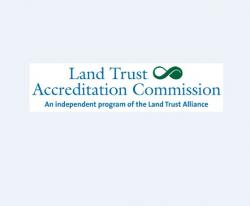Katy Prairie Conservancy is an accredited land trust. Accreditation meansKaty Prairie Conservancy meets national quality standards for protecting important natural places and working lands forever. Katy Prairie Conservancy has demonstrated to the Land Trust Accreditation Commission its commitment to excellence. Accredited land trusts meet national quality standards for protecting important natural places and working lands forever. These land trusts demonstrate their commitment to excellence by adopting Land Trust Standards and Practices, the ethical and technical guidelines for the responsible operation of a land trust, and meeting the accreditation requirements drawn from them. Learn More: http://www.landtrustaccreditation.org/aboutRole: Professional with expertise in this field
Coastal Prairie Conservancy (formerly Katy Prairie Conservancy)
384 Pageviews Read Stories
- EIN 76-0377029
- info@coastalprairieconservancy.org
- (713) 523-6135
- 5615 Kirby Drive, Suite 867 Houston TX 77005 USA
- www.coastalprairieconservancy.org
- Add to Favorites
Promote This Nonprofit
Nonprofit Overview
Causes: Animals, Environment, Farmland Preservation, Food, Land Resources Conservation, Wildlife Sanctuaries
Mission: The Coastal Prairie Conservancy (formerly the Katy Prairie Conservancy) was formed in 1992 to conserve the coastal prairie for people and wildlife before it disappears. We are a nationally accredited 501(c)(3) non-profit organization located in Houston, Texas, and a trusted leader in local land protection. Our vision for the future is simple: Save a piece of the prairie. Ensure healthy communities. Connect people with nature. Safeguard wildlife.
Results: We are also one of the largest local land conservation organizations, by acreage, in southeast Texas, protecting over 33,000 acres of coastal prairie.
Target demographics: wildlife and communities
Geographic areas served: the greater Houston area in southeast Texas
Programs: Protected Lands Program - The timely conservation of natural lands is urgent in the Greater Houston region, as growth is consuming thousands of acres of coastal prairie. CPC’s work addresses the loss of these lands and how it threatens the well-being of people and wildlife in the region. We know land conservation provides communities with many benefits, including: (1) prairie grasses absorb and hold back floodwaters while sequestering carbon; (2) wetlands protect our water quality and quantity; (3) open and connected spaces help maintain the biodiversity of the coastal prairie; (4) enhanced coastal prairie provides homes for wildlife; (5) working lands preserve a way of life for farmers and ranchers and food for our community; (6) public access to conserved lands offers important recreational opportunities, provides health benefits, and boosts nature tourism; (7) conservation impacts our local economy by increasing neighboring property values; and (8) open lands provide a cost-effective solution for flood damage reduction. Land Stewardship Program - CPC’s restoration strategy and implementation plays a critical role in the habitat needs for wildlife and pollinators in the Central Flyway by eliminating invasive vegetation and creating rich wildlife habitat that provides foraging, roosting, and nesting habitat for resident and migratory waterfowl, shorebirds, and upland species. Grasslands provide habitat for upland species such as the Bobwhite quail and Sprague’s pipet, species that have been declining because of lack of grassland habitat nationwide. Mottled ducks in adjacent wetlands use upland grassland for nesting habitat. In addition, an increase in the milkweed plant creates habitat for the monarch butterfly which is a species of major concern for state and federal agencies. This restoration work plays a role in the region’s flood control as prairie grasses absorb and help slow floodwaters traveling downstream and help the health and resiliency of our communities, while wetlands hold and slow down stormwaters and improve water quality. Community Resilience- CPC's land conservation and stewardship programs tie in perfectly with resiliency efforts, as CPC and partners work to ensure the protection and restoration of coastal prairie lands and the incorporation of green infrastructure to enhance flood reduction efforts and improve the future resilience and health of our region. Community Outreach- CPC is working to expand our outreach events and public access opportunities across the Katy Prairie Preserve. We know how important getting out into nature is for individuals' physical and mental health, and educating our community on the importance of the prairie system will help us engage more support in the long term. Public Policy and Research - The goal of CPC’s public policy efforts is to encourage conservation of the prairie and ensure that its current and anticipated protected lands are not compromised – either for the wildlife that reside on or winter on the prairie or the people who enjoy the prairie as residents or visitors. In addition, as a nationally accredited land trust, CPC also monitors state and federal legislation that can benefit its programs. CPC’s research efforts identify the ways grasslands and wetlands provide natural benefits to a growing region, reintroduce species that were endemic to the prairie, and provide important habitat for the many species that use the prairie. CPC also works with universities in the area to provide land to accommodate faculty and student research.




